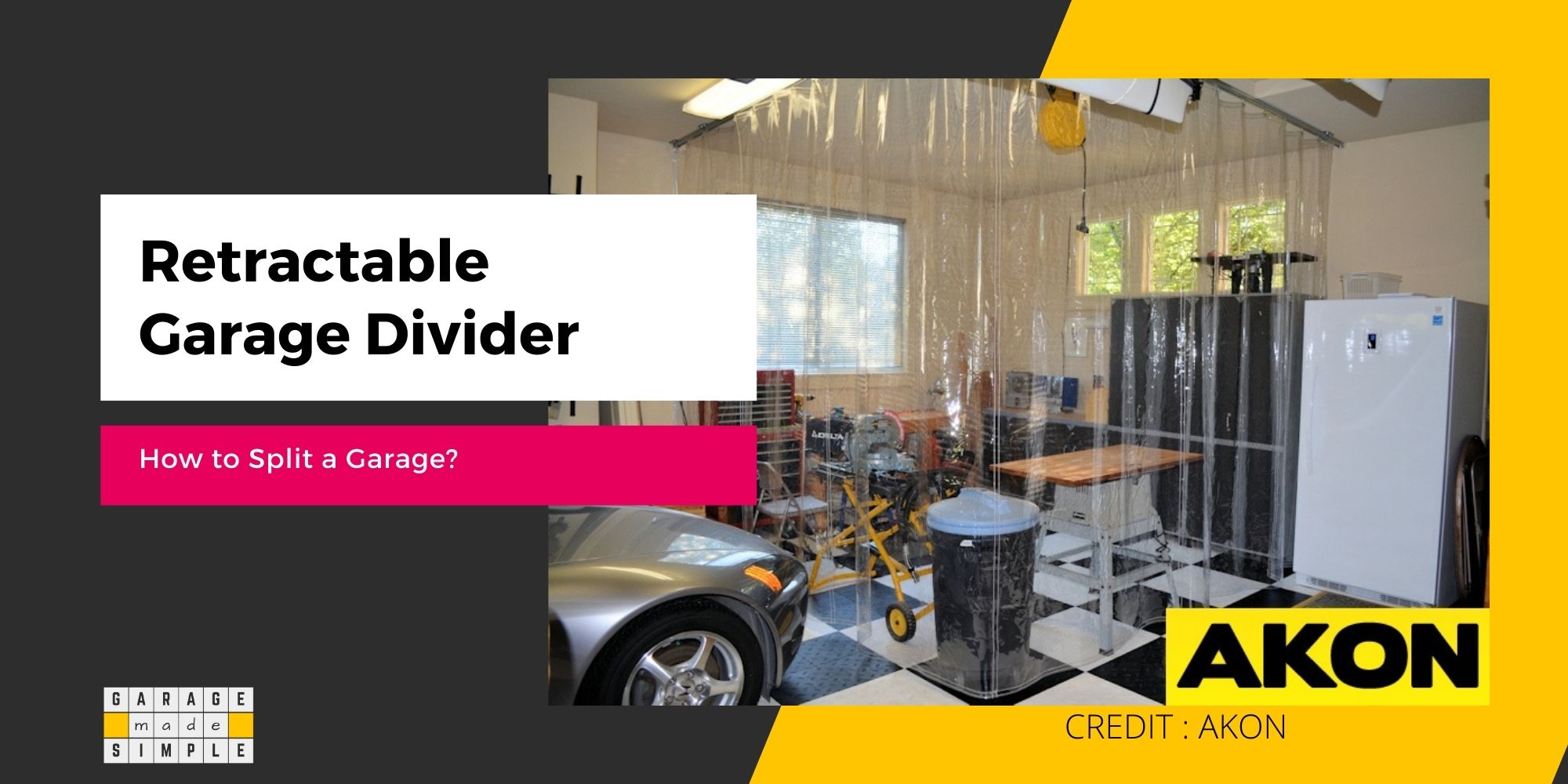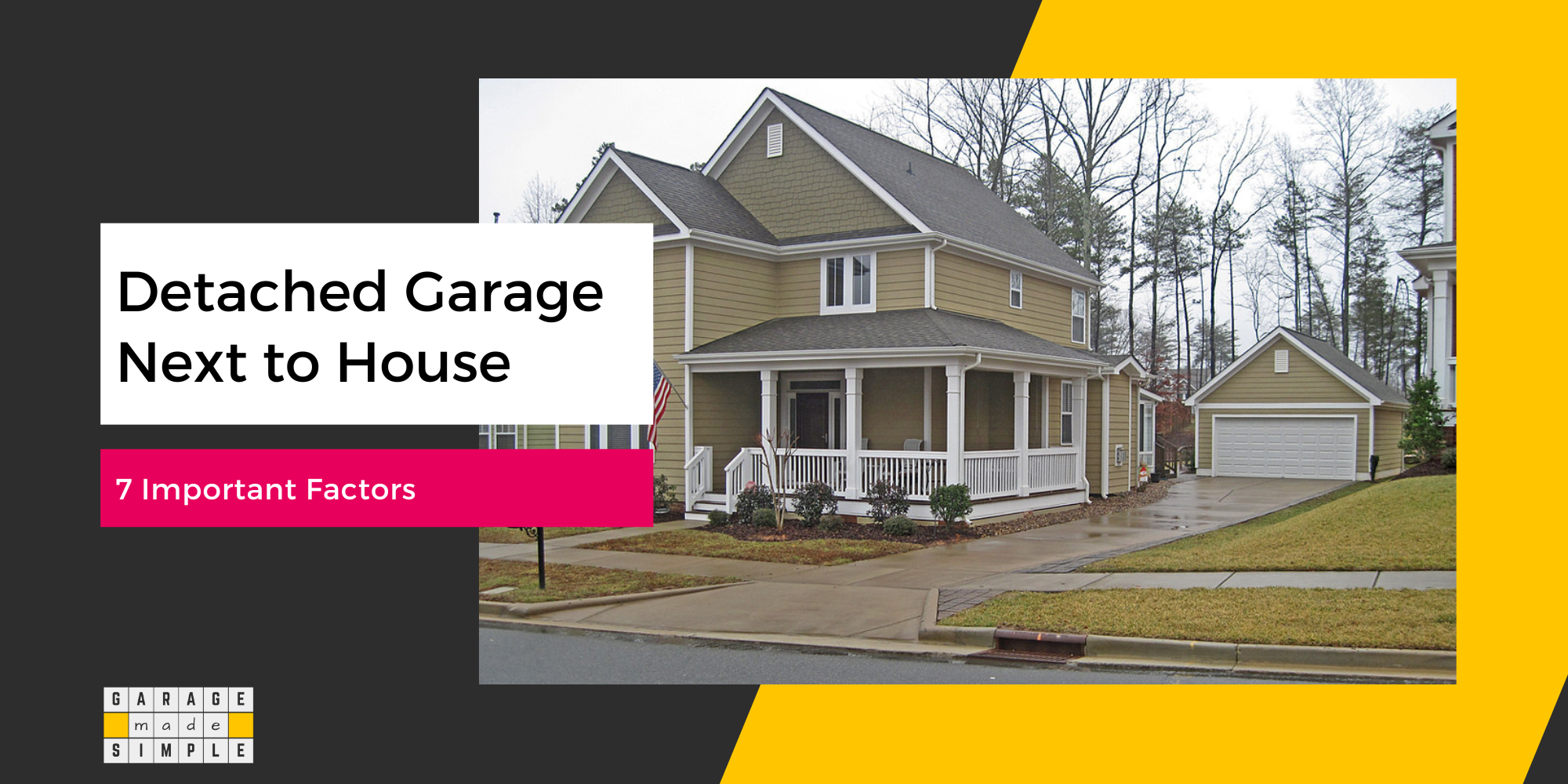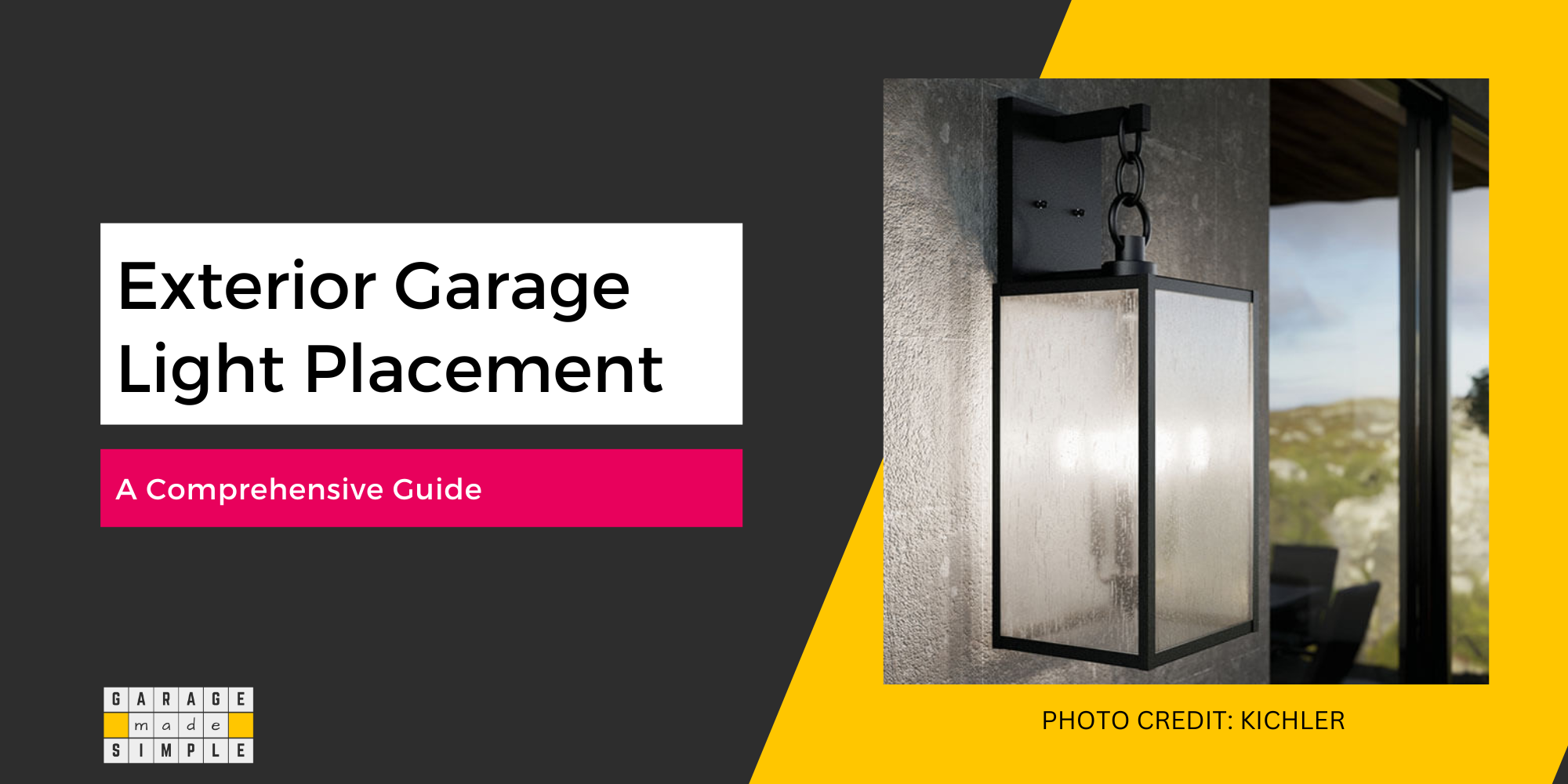HVAC Unit in Garage: Why its Important to Know the Code?
garagemadesimple.com is a participant in the Amazon Services LLC Associates Program, an affiliate advertising program designed to provide a means for sites to earn advertising fees by advertising and linking to Amazon.com . The website is also an affiliate of a few other brands.
Can you Put HVAC Unit in Garage?
An HVAC system is an integral part of most homes in the US. Yet, it is extremely difficult for you to find the HVAC codes, regulations, and requirements, relevant to your home. It certainly was for me! I am guessing, like me, you have the same question; “Can you put HVAC Unit in Garage?”
The building code allows you to keep the HVAC Unit in Garage provided a) the HVAC unit is kept in an air sealed cabinet b) the furnace does not use solid fuel c) furnaces & air handling systems that supply air to living spaces shall not supply air to or return air from a garage.
In short the HVAC system for the house can not be the same as the HVAC system for the garage. They have to be two separate & independent systems.
Local building codes may adopt more stringent regulations, so always check with them first.
Well, the best place for the HVAC unit is the basement or the attic. Consider putting the HVAC Unit in Garage, only if your house does not have either.
Read this post till the end, if you must put the HVAC Unit in Garage.
The Home HVAC System
HVAC is short for Heating, Ventilation & Air Conditioning. HVAC is an essential part of most homes in the US.
Without HVAC in your home, you would be shivering through the winters and sweating it out during the summers.
The Concept
The functions of heating and cooling a building have been around for some time. Ancient civilizations such as the Egyptians, Romans and Chinese knew a thing or two about keeping a building cool.
The concept of cooling using wet reeds, aqueducts and fans, invented by them, are in fact adopted by the present day HVAC systems.
Initially HVAC systems were installed only in major public buildings. As the technology advanced and costs came down, homes could afford central heating and air conditioning.
Today the HVAC system of a house is compact and mostly kept out of sight.
We just know that we can get as comfortable as we want at the press of a button! Pretty awesome!
The HVAC Unit
The HVAC unit is a bit like the heart and circulatory system in our body. The heart of the HVAC is the equipment and the circulatory system is the ducting.
The heart of the home HVAC Unit will have the following components:
Heating:
Furnace – where the heat is generated.
Heat Exchanger – where the cold air pulled in from the house gets heated by the furnace and is pushed back in the house.
Cooling:
Condensation Unit – where the refrigerant gives off heat to the outside air and is cooled.
Evaporator Coil – where the cold refrigerant absorbs the heat from the warm home air passing over it.
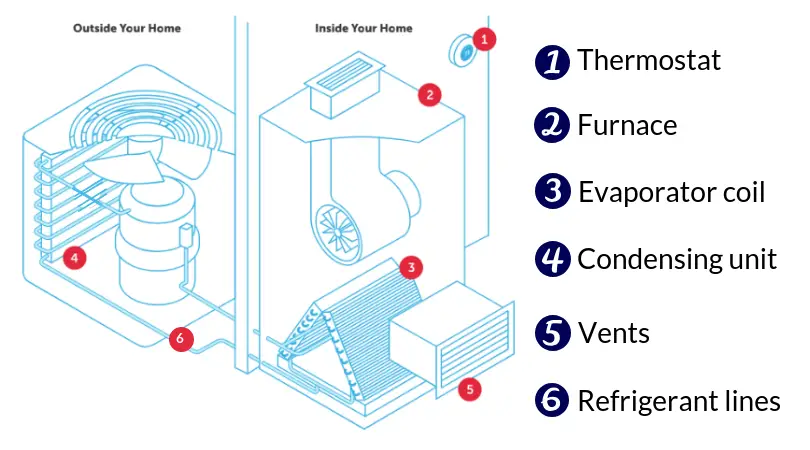
Controls:
Thermostat – controls the switching on or off of the HVAC based on set temperature.
Ducting:
Supply – the air from the HVAC is taken to different parts of the house and released through vents.
Return – The air from the different parts of the house is collected and brought to the HVAC.
Building Code for HVAC Unit in Garage
The 2021 edition of the International Residential Code (IRC) states the following concerning ducts that penetrate garage walls and ceilings:
R302.5.2 Duct Penetration: Ducts in the garage and ducts penetrating the walls or ceilings separating the dwelling from the garage shall be constructed of a minimum No. 26-gauge (0.48 mm) steel sheet or other approved material, and shall have no openings in the garage.
There are two very important reasons there can not be any air leakage between the garage and the dwelling (living zone of the house).
Carbon Monoxide
Carbon monoxide (CO) is the most toxic component of a car exhaust. It is produced from the incomplete combustion of gas.
You can’t even detect it because it is colourless, odourless and tasteless. But it’s a killer because it
“displaces oxygen in the blood and deprives the heart, brain and other vital organs of oxygen. Large amounts of CO can overcome you in minutes without warning — causing you to lose consciousness and suffocate.”
OSHA
Cars idling in the garage, even for short periods of time, can create enough carbon monoxide to be lethal if it finds its way into the house.
This is the reason the 2021 edition of the International Residential Code (IRC) specifies as under:
M1601.6 Independent Garage HVAC Systems: Furnaces and Air Handling Systems that supply air to living spaces shall not supply air to or return air from a garage.
Fire Hazard
The garage has a high potential for starting fires because of the abundance of flammable materials such as gas, oil, lubricants and paint. This is the reason 2021 International Residential Code (IRC) has the following codes for attached garages.
R302.5.1 Opening Penetration (applies to Garage Entry Doors)
Worth reading my earlier blog post Garage Entry Door To House (9 Important Things You Need To Know).
R302.6 Dwelling Garage Fire Separation (applies to adjoining Garage Walls & Ceilings)
My post on 10 Reasons Why It Is Better To Drywall A Detached Garage also talks about the building code for adjoining walls of attached garages.
Information Source: 2021 edition of the International Residential Code (IRC)
I highly recommend getting one of these; Kidde AC Plug-In Carbon Monoxide and Explosive Gas Detector Alarm. It protects you and your family from 2 deadly threats; carbon monoxide and explosive gas.
Locating HVAC Unit in Garage
Locate the HVAC Unit in Garage only if you do not have a basement, an attic or any other suitable location within the house.
Building America Solution Center of The Office of Energy Efficiency & Renewable Energy is very clear in it’s guidelines.
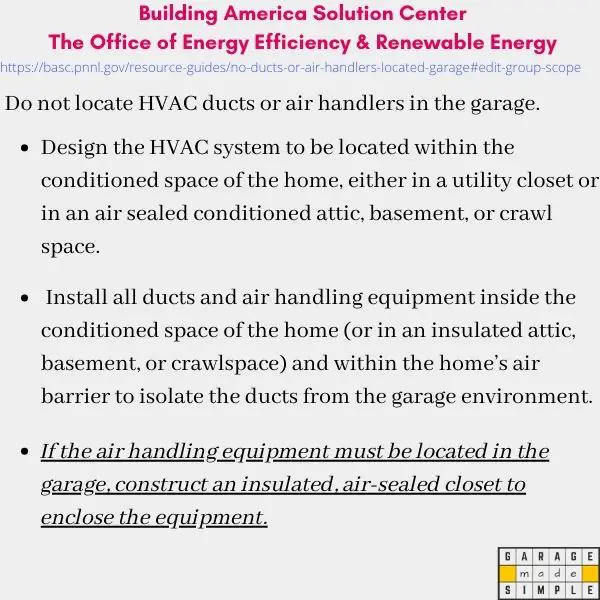
In essence, the guideline is, try not to locate the HVAC Unit in Garage, but if you must, keep it totally separate from the garage space.
Climate Controlled Garage
There are many reasons to incorporate climate control in your garage. I have explained the benefits of a climate controlled garage in some detail in my earlier blog post How To Make Sure Of Best Climate Control For Your Garage.
The main benefits are:
- Making the garage a comfortable place to work, relax or have some fun with family & friends.
- Enhancing the life of several parts of your car. Batteries, tires and the paint job last longer.
- Allowing you to store gear which is sensitive to temperature fluctuations, high humidity or exposure to dust.
- Prolonging the life of the garage itself such as the floor & door.
- Saving money on energy bills. Not all climate controls are active and use energy. Some like insulation are passive and actually reduce energy consumption.
Tempting as it may be, connecting your home HVAC Unit ducts to heat or cool your garage is absolutely not acceptable. You will straight away be violating the IRC Building Code, Section M1601.6
M1601.6 Independent Garage HVAC Systems: Furnaces and Air Handling Systems that supply air to living spaces shall not supply air to or return air from a garage.
So what do you do?
The best solution is that your garage should have it’s own, preferably ductless, HVAC system. Fortunately. this can be done by simply installing a Mini Split Ductless Air Conditioner.
It is important to get the model which has sufficient cooling power for your needs. Typically an 18000 BTU should be fine for a 3 car garage.
- 18000 BTU Mini Split Ductless Air Conditioner from Air-Con Int.
- It is a high efficiency air conditioner, heater and dehumidifier all in one.
- Built with pro-grade materials for a long life.
- WIFI ready with optional additional remote.
Bottom Line
The bottom line is that if you have a basement or attic then the HVAC Unit must be installed there. Settle for installing the HVAC Unit in Garage only as a last resort.
Do ensure that the HVAC Unit in Garage is installed within an air sealed closet.
Further, adhere to M160.2.1 of the IRC code and ensure that Furnaces and Air Handling Systems that supply air to living spaces shall not supply air to or return air from a garage.
A mini-split ductless three-in-one air conditioner (air conditioner, heater and dehumidifier all in one) can be used for climate control of the garage, completely independent of the house HVAC System.
Thank you very much for reading the post. I do hope you found it informative and useful.




